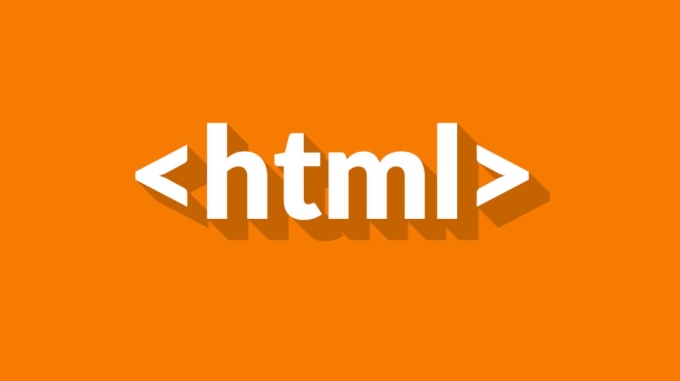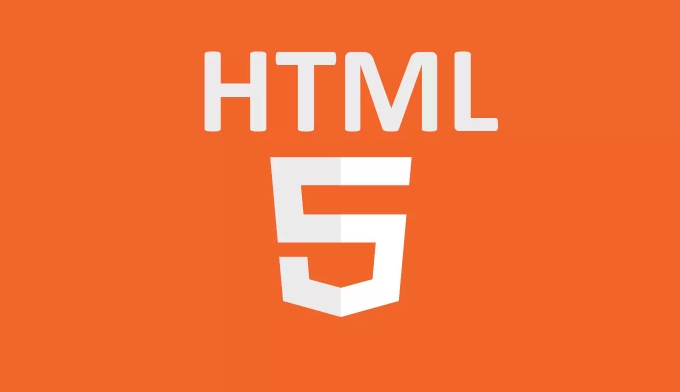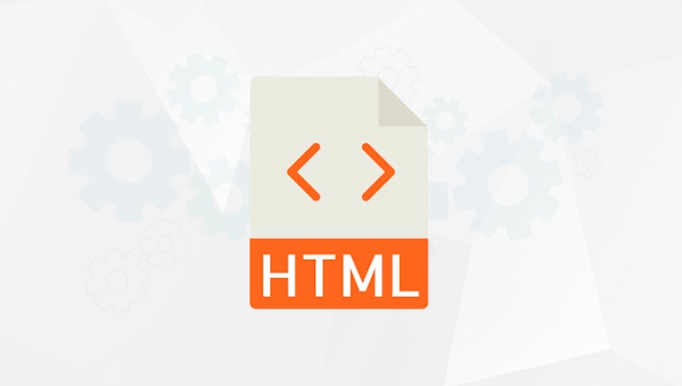The required property is the basic tool in HTML5 for form validation, ensuring that users fill in fields before submitting. 1. It is directly added to the <input>,

In web forms, the required property is a simple but very practical tool to ensure that users fill in certain fields before submitting. It does not require JavaScript to implement basic verification functions and is the first line of defense for front-end verification.

Basic usage: directly add it to the input tag
To use the required property, just add it to <input> , <textarea></textarea> , or <select></select> tags you want to fill in:
<input type="text" name="username" required>
This way, when the user tries to submit a form, if the field is empty, the browser will automatically prompt them to fill in the content. Different browsers may have different prompt styles, but a short prompt message will usually pop up, such as "Please fill in this field".

Note:
requiredproperty is only effective in browsers that support HTML5. If you need to be compatible with old browsers, it is best to use it with JavaScript verification.
Supports multiple input types to improve user experience
required can be used with many HTML5 input types, such as:

-
type="email": Requires entry of a legal email format -
type="number": limits only numbers to be entered -
type="url": Must be a valid URL -
type="tel": phone number (the mobile terminal will call up the numeric keyboard)
These types are used in conjunction with required to provide a more friendly input experience and verification mechanism on mobile or in modern browsers.
For example, the following example:
<input type="email" name="email" required placeholder="Please enter your email">
If the user does not fill in or the content is not in the email format, the browser will block the submission and prompt an error.
Naturally combined with form submission behavior
When you use the required property in the form, the browser will automatically check when the user clicks the submit button. If a required item is not filled in, the form will not be submitted and the focus will automatically be positioned on the first required item that is not filled in.
You can use it with other properties, such as:
-
placeholder: Provides input prompts -
pattern: Regular expression validation (HTML5 only) -
minlength/maxlength: limit input length
These properties can exist simultaneously with required , making verification more comprehensive:
<input type="text" name="password" required minlength="6" placeholder="at least 6 digits of password">
Not omnipotent, don't rely on it for complex verification
Although required is convenient, it is only responsible for "whether it is empty" and will not judge whether the content makes sense. For example, you have an age field:
<input type="number" name="age" required>
Even if the user enters -100 , it will pass the verification as long as it is not a null value. Therefore, for complex logical judgments, JavaScript or backend verification must be used to ensure the bottom line.
In addition, sometimes users may mistakenly clear the field. At this time, they can manually check whether it is empty in JS and give prompts in advance, rather than waiting for the user to submit it before discovering the problem.
Overall, required is a lightweight but very practical form verification property that is suitable for ensuring that the user fills in the keyword fields. Although it cannot handle too complex logic, it is enough in most scenarios.
The above is the detailed content of How to use the required attribute for form validation?. For more information, please follow other related articles on the PHP Chinese website!

Hot AI Tools

Undress AI Tool
Undress images for free

Undresser.AI Undress
AI-powered app for creating realistic nude photos

AI Clothes Remover
Online AI tool for removing clothes from photos.

Clothoff.io
AI clothes remover

Video Face Swap
Swap faces in any video effortlessly with our completely free AI face swap tool!

Hot Article

Hot Tools

Notepad++7.3.1
Easy-to-use and free code editor

SublimeText3 Chinese version
Chinese version, very easy to use

Zend Studio 13.0.1
Powerful PHP integrated development environment

Dreamweaver CS6
Visual web development tools

SublimeText3 Mac version
God-level code editing software (SublimeText3)

Hot Topics
 How can CSS be used to implement dark mode theming on a website?
Jun 19, 2025 am 12:51 AM
How can CSS be used to implement dark mode theming on a website?
Jun 19, 2025 am 12:51 AM
ToimplementdarkmodeinCSSeffectively,useCSSvariablesforthemecolors,detectsystempreferenceswithprefers-color-scheme,addamanualtogglebutton,andhandleimagesandbackgroundsthoughtfully.1.DefineCSSvariablesforlightanddarkthemestomanagecolorsefficiently.2.Us
 What are some common techniques for vertically centering content using CSS?
Jun 12, 2025 am 10:27 AM
What are some common techniques for vertically centering content using CSS?
Jun 12, 2025 am 10:27 AM
Vertical centering content can be implemented in CSS in a variety of ways, the most direct way is to use Flexbox. 1. Use Flexbox: By setting the container to display:flex and in conjunction with align-items:center, vertical centering of child elements can be easily achieved; 2. Combination of absolute positioning and transform: suitable for absolute positioning elements, by setting top and left to 50% and then using translate (-50%,-50%) to achieve centering; 3. CSSGrid: Through display:grid and place-items:center, horizontal and vertical centering can be achieved at the same time. If only vertical centering is required, use align
 Can you explain the difference between em, rem, px, and viewport units (vh, vw)?
Jun 19, 2025 am 12:51 AM
Can you explain the difference between em, rem, px, and viewport units (vh, vw)?
Jun 19, 2025 am 12:51 AM
The topic differencebetweenem, Rem, PX, andViewportunits (VH, VW) LiesintheirreFerencepoint: PXISFixedandbasedonpixelvalues, emissrelative EtothefontsizeFheelementoritsparent, Remisrelelatotherootfontsize, AndVH/VwarebaseDontheviewporttimensions.1.PXoffersprecis
 What are the advantages of using CSS Grid for complex two-dimensional page layouts?
Jun 12, 2025 am 10:28 AM
What are the advantages of using CSS Grid for complex two-dimensional page layouts?
Jun 12, 2025 am 10:28 AM
CSSGridisapowerfultoolforcreatingcomplextwo-dimensionallayoutsbyofferingcontroloverbothrowsandcolumns.1.Itallowsexplicitdefinitionofrowsandcolumnswithflexiblesizingusingfeatureslikegrid-template-columns:repeat(auto-fit,minmax(200px,1fr))forresponsive
 What are the key differences between inline, block, inline-block, and flex display values?
Jun 20, 2025 am 01:01 AM
What are the key differences between inline, block, inline-block, and flex display values?
Jun 20, 2025 am 01:01 AM
Choosing the correct display value in CSS is crucial because it controls the behavior of elements in the layout. 1.inline: Make elements flow like text, without occupying a single line, and cannot directly set width and height, suitable for elements in text, such as; 2.block: Make elements exclusively occupy one line and occupy all width, can set width and height and inner and outer margins, suitable for structured elements, such as; 3.inline-block: has both block characteristics and inline layout, can set size but still display in the same line, suitable for horizontal layouts that require consistent spacing; 4.flex: Modern layout mode, suitable for containers, easy to achieve alignment and distribution through justify-content, align-items and other attributes, yes
 What are CSS Houdini APIs, and how do they allow developers to extend CSS itself?
Jun 19, 2025 am 12:52 AM
What are CSS Houdini APIs, and how do they allow developers to extend CSS itself?
Jun 19, 2025 am 12:52 AM
CSSHoudini is a set of APIs that allow developers to directly manipulate and extend the browser's style processing flow through JavaScript. 1. PaintWorklet controls element drawing; 2. LayoutWorklet custom layout logic; 3. AnimationWorklet implements high-performance animation; 4. Parser&TypedOM efficiently operates CSS properties; 5. Properties&ValuesAPI registers custom properties; 6. FontMetricsAPI obtains font information. It allows developers to expand CSS in unprecedented ways, achieve effects such as wave backgrounds, and have good performance and flexibility
 What is the significance of Vue's reactivity transform (experimental, then removed) and its goals?
Jun 20, 2025 am 01:01 AM
What is the significance of Vue's reactivity transform (experimental, then removed) and its goals?
Jun 20, 2025 am 01:01 AM
ReactivitytransforminVue3aimedtosimplifyhandlingreactivedatabyautomaticallytrackingandmanagingreactivitywithoutrequiringmanualref()or.valueusage.Itsoughttoreduceboilerplateandimprovecodereadabilitybytreatingvariableslikeletandconstasautomaticallyreac
 How can CSS gradients (linear-gradient, radial-gradient) be used to create rich backgrounds?
Jun 21, 2025 am 01:05 AM
How can CSS gradients (linear-gradient, radial-gradient) be used to create rich backgrounds?
Jun 21, 2025 am 01:05 AM
CSSgradientsenhancebackgroundswithdepthandvisualappeal.1.Startwithlineargradientsforsmoothcolortransitionsalongaline,specifyingdirectionandcolorstops.2.Useradialgradientsforcirculareffects,adjustingshapeandcenterposition.3.Layermultiplegradientstocre






